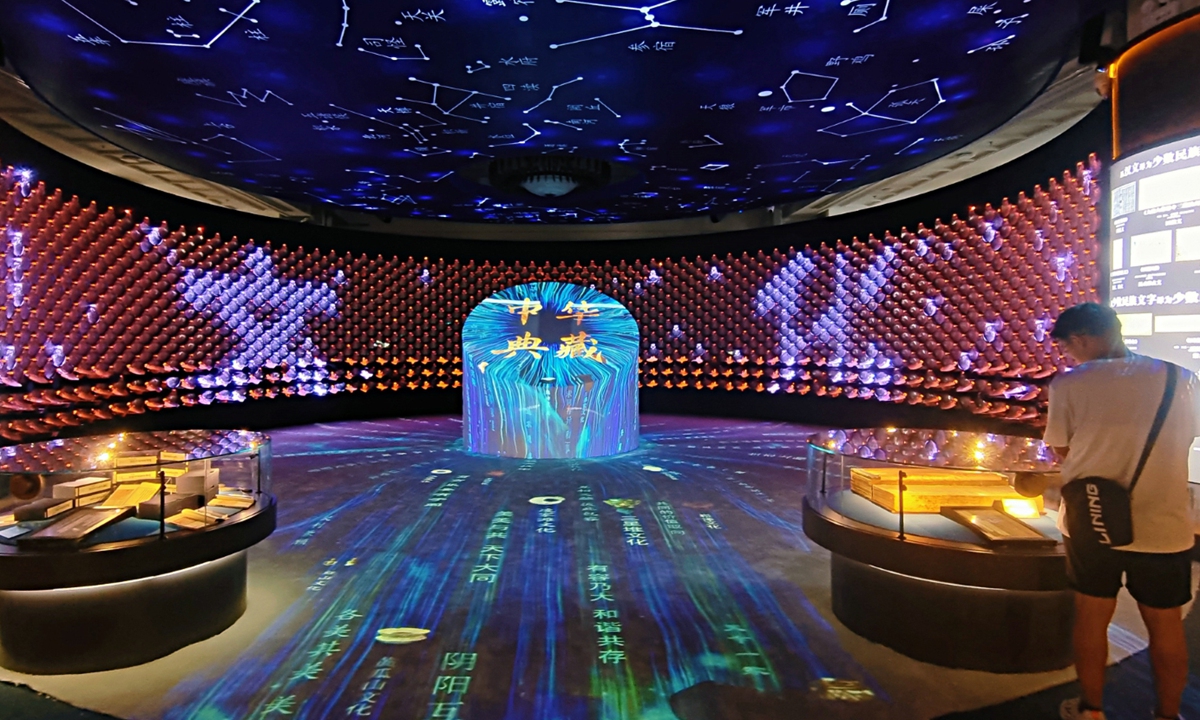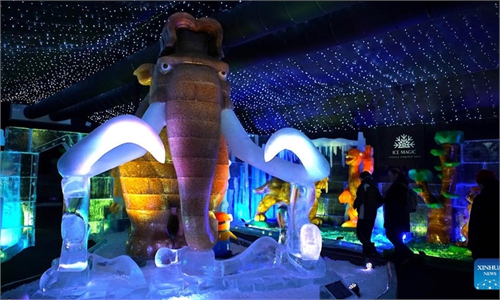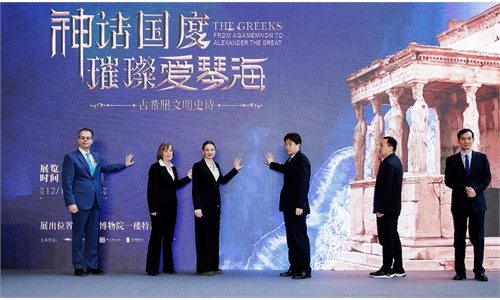ARTS / CULTURE & LEISURE
Exhibition showcases sense of community felt by nation
More than 100,000 have visited since opening

Photo: VCG
While it was bitterly cold and windy outside in Beijing, inside the Cultural Palace of Nationalities a group of students from Minzu University of China filled the exhibition halls with warmth and enthusiasm. They were listening to a museum guide attentively and taking photos of the exquisite artifacts on display.The students were visiting the Exhibition of Cultural Relics and Ancient Books for Consolidating the Sense of Community for the Chinese Nation. The National Ethnic Affairs Commission selected more than 1,500 cultural relics and ancient books for the exhibition, which is divided into three parts: the Great Unity, Integration and Unity.
A fish-print painted potteryware on display dating back to about 4,700 to 5,100 years ago comes from the Cultural Palace of Nationalities' collection. It is a proof of communication between and integration of the Yangshao culture and the Majiayao culture.
While the former originated around the middle course of the Yellow River, the latter was in the upper reaches of the Yellow River and its tributaries. They both formed a significant part of Chinese civilization.
During the early period of Chinese civilization, the different cultures of each region were isolated from each other. However, as time went on they began to gradually integrate with each other and their unity increasingly became greater, said the museum guide.
The exhibition starts with this early period of Chinese civilization, aiming to show the communication and integration that existed long ago.
"The Chinese nation has been unified since ancient times. It also shows the cohesion of the Chinese nation and the appeal of Chinese culture," the museum guide noted.
The guide also pointed out a copy of The Gongyang Commentary on the Spring and Autumn Annals: The First Year of Duke Yin and introduced that, the first time the term "Great Unity" appeared in literature was in that book.
The ancient books mainly cover four categories - the governance of the country, the history of the Chinese nation, the exchanges and integration of cultures and the principle of developing religions in the Chinese context. Some of the ancient books on display are rare copies or the only existing copy.
A beautifully designed wall resembling a sea of white seashells is dedicated to ancient books. If a visitor pushes a button on a seashell, a seashell-shaped drawer containing a copy of the ancient book will extend from the wall. A lot of visitors, especially younger ones, find this to be a fun way to interact with ancient treasures.
The exhibition has received more than 100,000 visitors since its opening in August.
Opened in October 1959 to commemorate the 10th anniversary of the People's Republic of China, the Cultural Palace of Nationalities was listed as one of the architectural treasures of China in the 20th century by the International Union of Architects in 1999. It has an abundant collection of more than 50,000 exquisite ethnic cultural relics, including costumes, coins and currency, musical instruments, handicrafts and religious articles.



